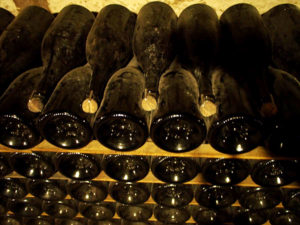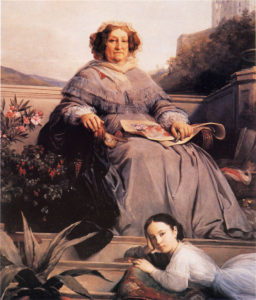
Champagne. Today we associate it with special occasions and luxury. Its bright, sparkling quality seems a natural fit with festivity. But what was its status during the Regency? “They didn’t have champagne during the Regency.” “They had champagne but it wasn’t bubbly.” “They couldn’t have it back then because the bottles exploded.” I hear comments like these frequently.
Research rabbit holes –don’t we love them? I had researched enough to be certain of the scene in my December release, Lord of Misrule, where the characters are drinking champagne at a fancy New Year’s ball. I avoided the full-on rabbit hole then (deadline pressure can stop that). But I’m not under as much pressure right now. Pursuing a different (but related) topic for one of the spin-off stories spawned by LOM has led me back to the rabbit hole of the history of champagne. Let’s find out the truth or error behind all those comments, shall we?
Some of the confusion seems to come from failing to distinguish between wines made in the Champagne region of France and the bubbly wine we call champagne, which did originate and take its name from there. Bubbly or “sparkling” wine has been around since wine started to be made. The Romans had sparkling wines. But bubbly wine wasn’t considered a good thing, originally. Bubbles in the wine were a flaw, along with the leftover sediment and cloudiness that usually accompanied the bubbles. Bubbles came from interrupted fermentation, a process that wasn’t well understood. Dom Pérignon, a 17th century Benedictine monk in the Champagne area, is sometimes credited as “the inventor” of champagne. But the truth is that no one “invented” it. It arises from a natural chemical process.

Legend has it that Dom Pérignon exclaimed, “Come, for I am drinking stars!” when he first tasted sparkling champagne wine. That hints at an enthusiasm history contradicts, for the monk actually dedicated much of his life to looking for ways to prevent the tendency of Champagne wines to fizz. In the process of his search, he did invent several techniques and advanced the understanding of how fermentation happens. But I suspect this “legend” may be a creation of the dedicated PR efforts of champagne makers expanding their markets during the later 19th century.
Champagne (the area) is in northeastern France, and the coldness of their winters often stopped the fermentation process until spring, when warmer temperatures triggered the process to start again. Wines produced in more southerly parts of France did not have this problem, and the Champagne wine makers, including the Benedictines, wanted to be able to compete. Besides this “inferior” quality that bedeviled their wines, French bottles were not very sturdy and the bottled bubbly wines did often explode, sometimes setting off a chain-reaction that could wipe out large portions of their stock.

The English actually can claim more of the credit for changing attitudes about sparkling Champagne wines, for they began to appreciate the bubbly stuff before anyone else. The English began to “make” champagne by adding extra sugar into the French wines when they were bottled, ensuring that additional fermentation would occur and create the “fizz”. From the 17th century English glass-makers used coal fires instead of wood fires as the French did, resulting in sturdier glass. By the 18th century they also introduced the process of using molds, producing a uniform vessel to contain the wines shipped over from France in barrels, and the use of cork stoppers, a practice lost since the Romans. Champagne wines shipped during the cold months and bottled by merchants in England would start fermenting again inside the English bottles, but due to the superior methods, the bottles would not explode.
The Marquis de St-Evremond is credited with making Champagne wines fashionable in London in the 1660s, a healthy development for the French wine exporters. France’s interest lagged behind until early in the next century, when Philip, Duke of Orléans, popularized sparkling champagne during his regency from 1715 to 1723. Between that time and the start of the French Revolution, many still-recognized “champagne houses” were founded, specifically as makers of sparkling champagne. (Ruinart (1729), Moët & Chandon (1750), Louis Roederer (1776), Veuve Clicquot (1772), Abele (1757), and Taittinger (1734), among others). Many did not grow grapes at all, but purchased grapes or wine already pressed from the vineyards to make into champagne.
Still, in this period it is estimated that only about 10% of the wine produced in the Champagne region was turned into sparkling champagne. The rest was regular “still” wine, usually of a pale pinkish color. Sparkling champagne went from being the bane of wine-makers trade to a luxury item in high demand in courts and the highest society of Europe. The spread of its popularity was furthered by the French Revolution, which sent many of the French nobility fleeing to other parts of Europe, bringing their taste for champagne with them.
The Napoleonic wars caused blockades in many European ports, but enterprising champagne agents found ways to smuggle their product out of France all the same. During those war years, champagne was harder to procure and even dearer in price than before, but demand was high and people still obtained it. Napoleon’s march on Moscow helped to spread the popularity of champagne to Russia, for the wine merchants’ agents went to Russia along with and sometimes ahead of the armies.

A French woman was responsible not only for growing the popularity of champagne during our period but also for vastly improving the quality of the product. Married to businessman Franҫois Clicquot when she was 21 years old, she became a widow at age 27 when he died in 1805. Known then as “Veuve Clicquot” (the widow Clicquot), she took over the management of his businesses and focused on the production of champagne.
Her most famous improvement was the invention of “riddling”, a process which removed the cloudy sediment and dead yeasts which could mar the appearance and taste of champagnes up to that time. The problem of removing it without releasing all of the “fizz” had never been solved. Various dates (1812, 1815, 1816) are given for this accomplishment, as she tried to keep the process a secret after she developed it. However, evidence suggests it was in use by 1811-12 when her company produced their “Cuvée de la Comète,” the first ever “vintage champagne”, honoring that year’s famous comet. In 1812 or 14? Veuve Clicquot’s lead sales agent smuggled a quantity of the Comet Champagne into Russia, even though French wines had been banned by Tsar Alexander I after Napoleon’s invasion. The wine’s quality was so outstanding that even the Tsar became an eager customer.

I’ve left out a lot of information, of course. But I can see where the various comments I quoted at the beginning of this post each have some grain of truth buried in them. “They didn’t have champagne during the Regency.” (During the war years it was much harder to obtain, and it was not exactly the same wine that we drink today –sweeter, for one thing, from the added sugar.) “They had champagne but it wasn’t bubbly.” (Most of the wines produced in Champagne continued to be “still” wines. Also, the champagnes they did have might have fewer bubbles if they were decanted to try to remove the sediments.) “They couldn’t have it back then because the bottles exploded.” (Until the French caught up to the English methods of creating glass bottles and sealing them, this was definitely a problem in France (and probably some of the time everywhere!)
The science behind making champagne made great strides just after the Regency period, and with it came more improvements and refinements in taste. The system of identifying champagnes as “extra-dry” or the driest “brut” also date to the middle of the 19th century and later. But wealthy Regency people were definitely drinking champagne, we can have no doubt. Do you ever drink champagne? Do you have a favorite brand? Do you remember having champagne to celebrate a special occasion?
Recommended sites for more in depth reading:
https://www.history.com/news/champagne-a-bubbly-history

I don’t have a favorite brand – economy rules! – but we do drink champagne for special occasions. Cheers!
Cheers to you as well, Susan! I don’t have a favorite brand, either. But as I like sweeter wines, I bet I would have liked the Regency champagne better than the kinds we have now! 🙂
in The Eight Ages of Justini’s , the author says that Sillery and Champagne were popular wines from the days of henry VII but because they were shipped to England in casks and bottled there, were more effervescent . A law in the time of George II made it illegal to import wine in cases, flasks, or bottles . Some always got through , of course. This law was repealed n 1802 but by 1803 the UK was once again at war with France. In 1780’s champagne sold for 8/ a bottle.
That’s so interesting, Nancy! Given the fragility of the French glass, I can see some reason behind a law like that (plus it supported the English glass-makers and bottling industry). Wow. 8/ a bottle in 1780 was a hefty price indeed! Very impressive if one could afford to buy it and serve it to one’s friends, especially in any great number. 🙂